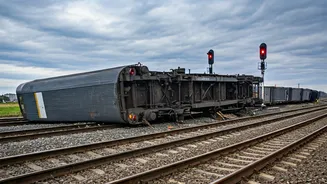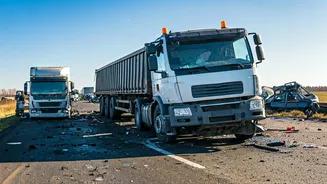Accident Overview
The distressing incident in Bilaspur, Chhattisgarh, involved a significant collision between a passenger train, a MEMU (Mainline Electric Multiple Unit)
train, and a goods train. The accident occurred, leading to injuries and immediate emergency responses. The location of the collision and the types of trains involved are crucial aspects to understanding the scale and nature of the incident. This type of multi-train accident underscores the need for thorough investigations into the causes, including possible failures in signaling, track conditions, or human error. The impact of the collision would have been substantial, especially considering the speeds at which the trains were likely traveling, and would have likely caused extensive damage to the train carriages.
Immediate Response
Upon the occurrence of the accident, a rapid response was initiated to aid those affected. Emergency services, including medical teams and rescue workers, were quickly dispatched to the scene. Their primary objectives were to assist the injured, provide immediate medical care, and begin the process of evacuating passengers. The extent of the injuries and the number of people affected were likely quickly assessed to help manage resources and determine the scale of the recovery operation. The local authorities, including the police and railway officials, would have been responsible for coordinating the rescue efforts, securing the area, and initiating investigations. The immediate response would have involved dealing with chaos, providing first aid, and ensuring the safety of all those involved.
Trains Involved
The collision involved a passenger train, designed for the transport of general passengers, a MEMU train, commonly used for local and suburban travel, and a goods train, which primarily transports freight. The interaction of these different types of trains indicates the complexity of railway operations and the potential for severe consequences when accidents occur. The MEMU train's role often highlights peak travel times and densely populated routes. Considering that the goods train carries cargo, the impact of the collision would have potentially created extra dangers. The specific routes and schedules of the trains at the time of the incident would be crucial details to evaluate to understand the accident dynamics. Identifying the exact trains involved provides context for subsequent investigations into the causes.
Location Specifics
The accident transpired in Bilaspur, a crucial railway hub in Chhattisgarh, which would have amplified the disruption caused by the collision, as many trains pass through that section. Being a major railway station, it is likely that the area had high traffic volume, making the accident even more impactful. The specific location within Bilaspur is of considerable importance, whether it happened within a station, on a bridge, or on an open track. The site's geographical characteristics could contribute to the severity of the incident. The environment surrounding the location, including local infrastructure and accessibility for emergency services, would have affected the effectiveness of the initial response. Knowing the precise location also assists with the investigation and helps in preventing similar incidents in the future.
Ongoing Investigation
Following the tragic event, a thorough investigation was initiated to ascertain the causes of the collision. This involved detailed reviews of the train schedules, the condition of the tracks, the signaling system, and the actions of the train operators. Investigators would meticulously examine the black boxes from the trains, which contain essential data regarding speed, braking, and communication records. The goal is to determine whether the collision was due to human error, mechanical failures, or other contributing factors, such as adverse weather conditions. The findings of this investigation are essential to prevent future accidents and to enhance railway safety measures. The outcomes will likely lead to recommendations for improved protocols and infrastructure upgrades to safeguard rail travel in the region.
















